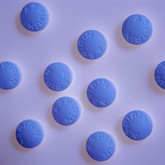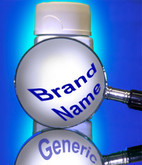Generics/Research
Effectiveness of chronic hepatitis C treatment using direct-acting antivirals: real-life data
Hepatitis is an inflammation of the liver and can be caused by medications, toxins, severe alcohol use and other medical conditions. Hepatitis can also be caused by viruses, most commonly hepatitis A, B and C. Both hepatitis A and B can be dangerous, but there are effective vaccines against both viruses, however, there is no vaccines for hepatitis C [1].
Higher generics use results in higher Medicare Part D star ratings
A study conducted by researchers from Auburn University and IMPAQ International has found that Medicare# Part D* prescription plans with higher generics use have higher summary star ratings and improved member experience [1].
Ensuring a stable supply of APIs in Japan
A stable supply of active pharmaceutical ingredients (APIs) is indispensable for a stable supply of finished pharmaceutical products (FPPs). It is also indispensable for promoting the use of generics, because API distribution issues can lead to generics shortages. For instance, of the 46 drug shortage problems that arose in FY2013, 21 were associated with API shortages [1]. These shortages can result in a perception among medical staff and patients that generic drugs are unreliable. Therefore, minimizing the risk of API shortage is crucial for promoting the use of generics.
Individual pathways for development of complex generics
The downside of having clear regulatory standards for approval of pharmaceuticals, according to Rodrigo Cristofoletti from Brazil’s Health Surveillance Agency (Agência Nacional de Vigilância Sanitária, ANVISA), is the overuse of one-size-fits-all (OSFA) approaches [1]. Although such approaches ensure harmonization throughout the regulatory decision-making process, they may not be adequate for all cases, and especially not in the case of complex generics.
Platelet reactivity with generic and brand-name clopidogrel
The salt linked to the clopidogrel molecule in generic preparations is suspected to affect its clinical efficacy. However, there is a lack of information about inhibition of platelet reactivity by generic preparations. A study was therefore carried out using both generic and brand-name clopidogrel to compare the platelet reactivity [1].
Free prescriptions do not always increase use of generics
One strategy to increase the use of generics is to offer them free of charge. This strategy presumes that this will shift demand away from expensive brand-name drugs and produce savings for insurers and customers alike. In order to test this theory, researchers from the University of Maryland studied co-payment data from Medicare recipients# to see if offering zero generic co-pays for oral antidiabetic drugs (OADs) and statins increased generics use among low-income subsidy (LIS) patients with diabetes.
Limited distribution networks found to be anticompetitive
Limited distribution networks, whereby a drug manufacturer has a contract with one or a small number of distributors, suppress competition in both the generic and biosimilar drug markets. This leads to high costs for both payers and patients, according to a recent US review [1].
Generic hepatitis drug effective in patients with or without HIV
Over 3% of people with hepatitis C infections also have HIV. A new study conducted in Taiwan shows that generic versions of the hepatitis C treatment Epclusa are equally effective in patients with and without HIV co-infection [1].
Factors influencing the use of trade and generic names
Using trade names for drugs in clinical practice has been shown to increase the use of brand-name drugs. Despite efforts by academic medical centres to teach generic drug names and discourage the use of trade names to reduce bias and contain costs, usage of trade names persists. In order to determine what factors might influence healthcare professionals to prescribe by brand-name or generic name, researchers from Stanford University School of Medicine carried out an analysis of medication pages [1].
Hospital use of generic drugs increases adoption by community pharmacies
A recent Japanese study reveals that hospital adoption of generic drugs can also promote their use by community pharmacies. The researchers found that hospital adoption of generic drugs increased community pharmacy dispensation by almost 10% in only a year, reducing overall medical costs [1].











